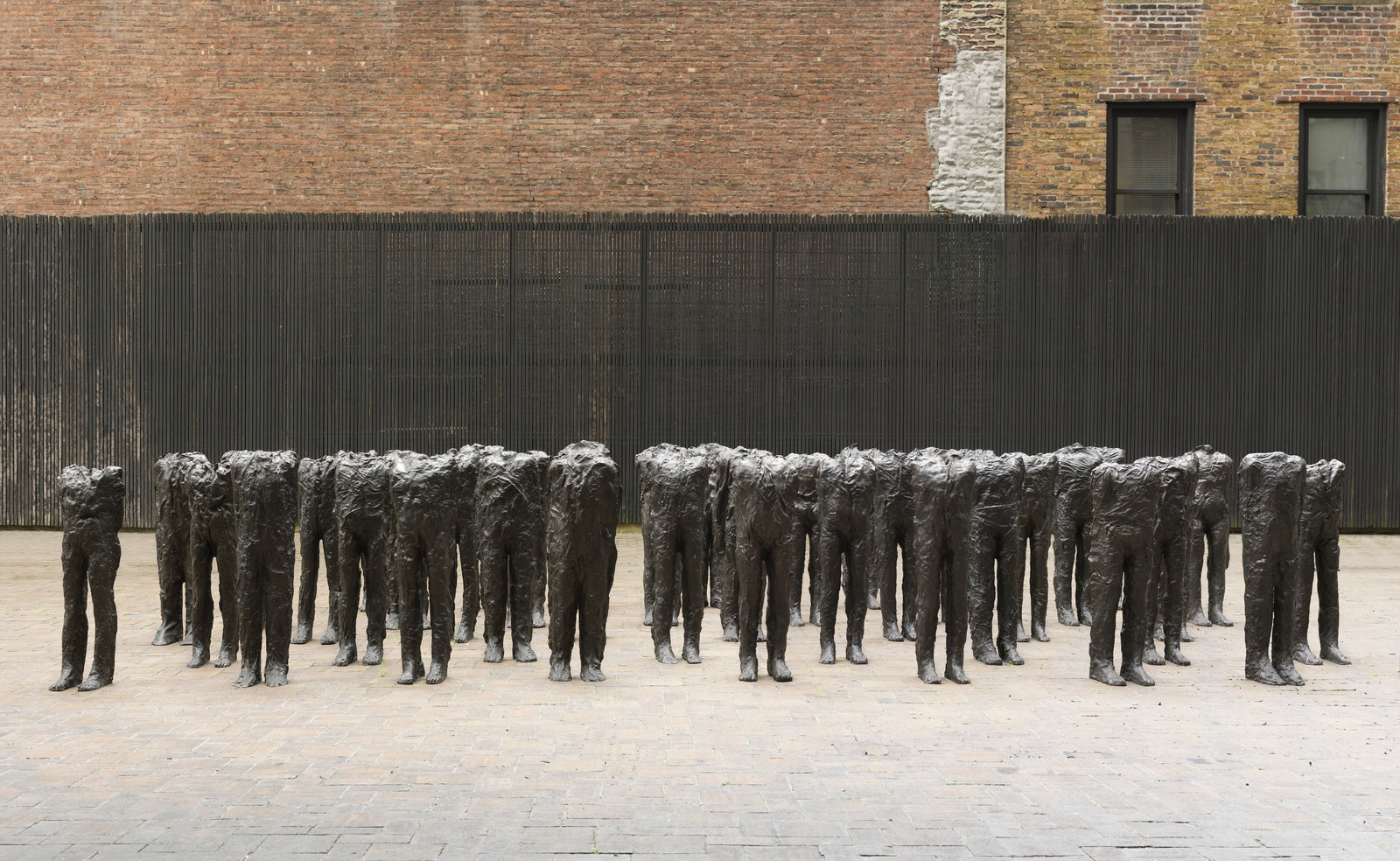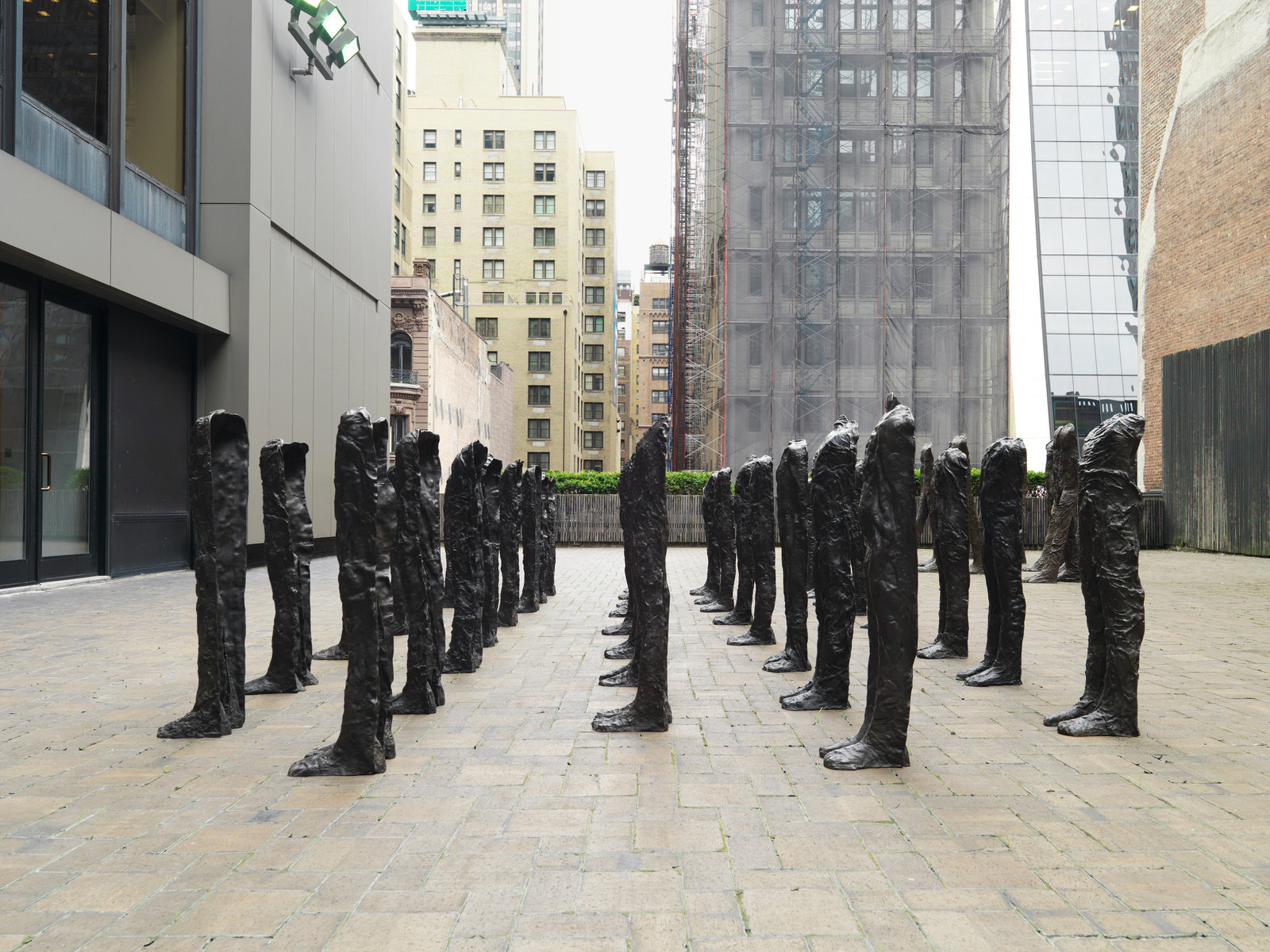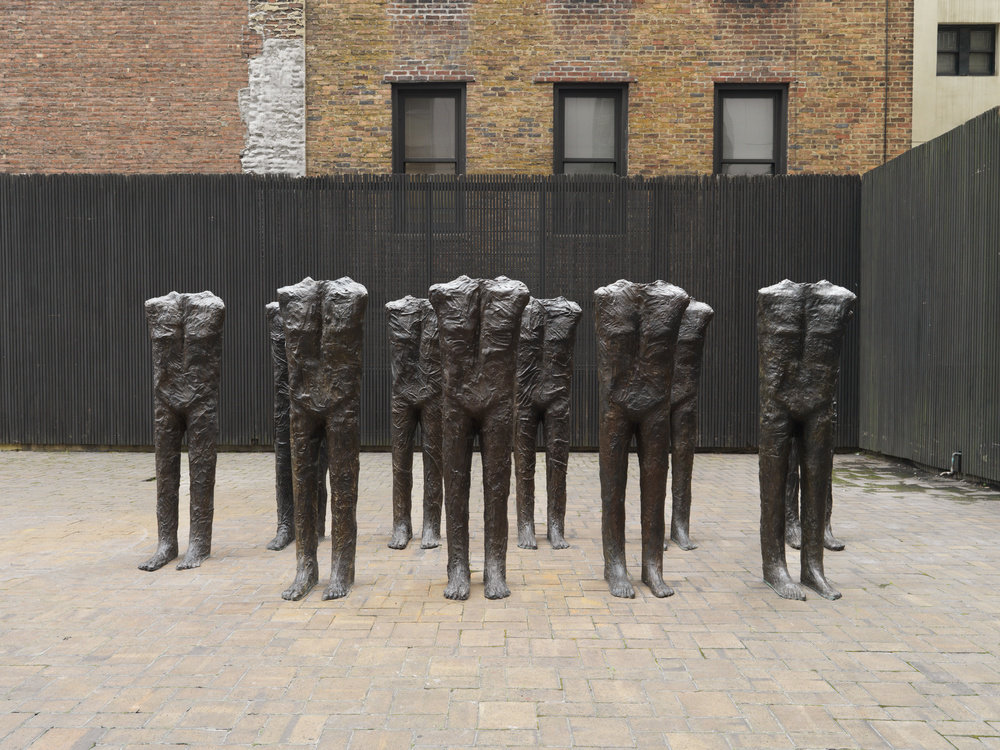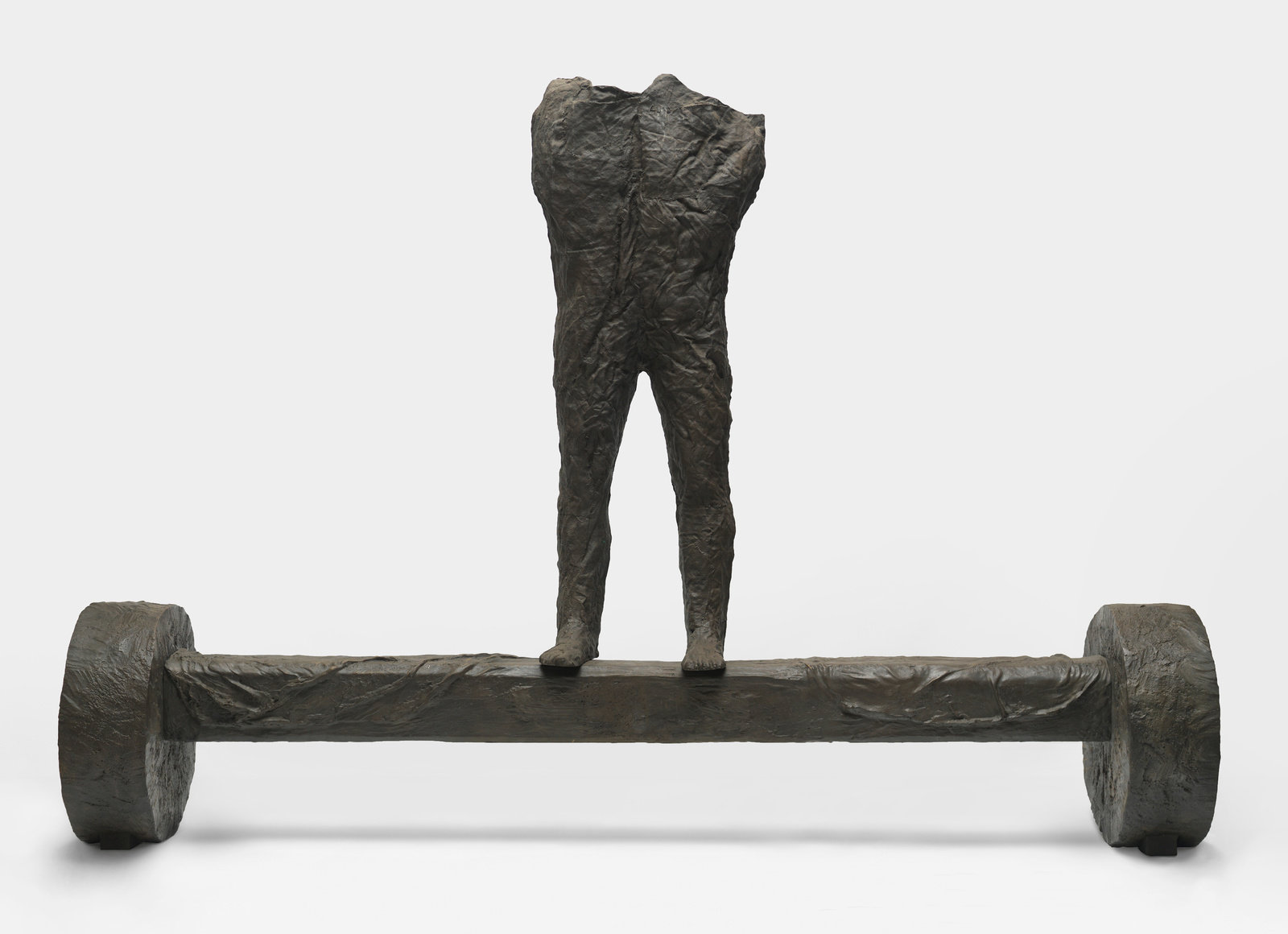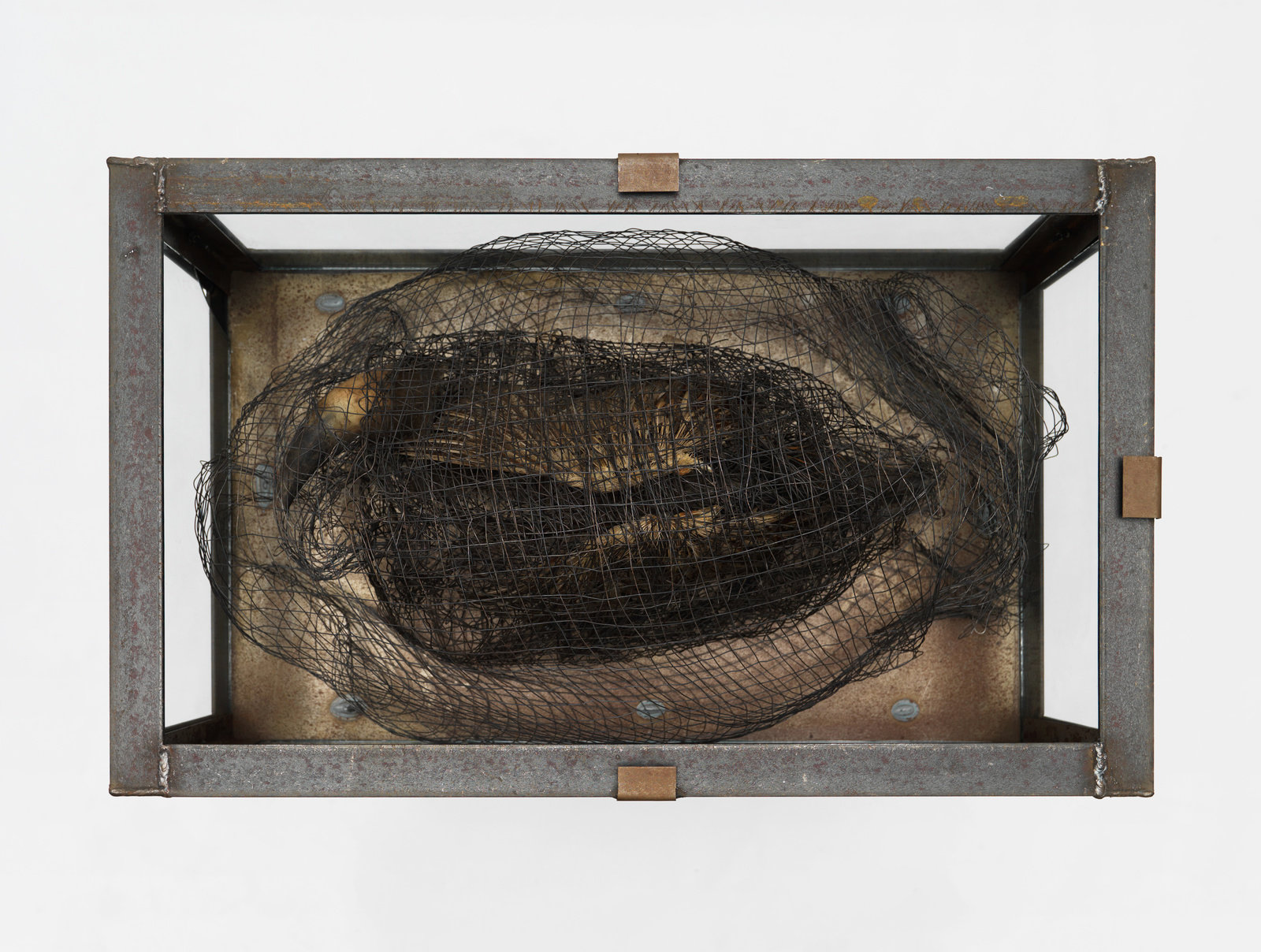Marlborough is pleased to announce Unrepeatability: Abakan to Crowd, an exhibition in celebration of the 85th birthday of the Polish-born sculptor, Magdalena Abakanowicz, curated by Mary Jane Jacob. The exhibition is a survey of works created from 1973 to 2006. Marlborough will present a concurrent group exhibition entitled War Games in Chelsea, featuring the work of eight artists from subsequent generations whose work has been influenced by Abakanowicz’s groundbreaking practice. Central to this group exhibition will be her monumental wood and iron work entitled Zyk (1989) from the artist’s War Games series. The exhibition will be also be accompanied by a solo presentation of Abakanowicz sculptures at the gallery’s Broome Street location
In the mid-1960s, when fiber-based objects were considered “craft” and therefore suitable for export from her native Poland, Abakanowicz began to utilize burlap and woven fabrics to create her sculptures, which allowed for the works to be exhibited in the West. Unrepeatability: Abakan to Crowd features the seminal work entitled Abakan Last (1978), a large hanging sculpture woven from sisal thread. The exhibition will also include works composed of burlap, such as the artist’s group of 14 Heads (1973-1975) and the 50 life-sized figures from the artist’s Crowds III (1989). Having experimented with fibers, stone, marble and aluminum, in 1985 Abakanowicz turned to bronze for the first time. Though initially the shift was a means to facilitate outdoor installation, bronze soon became a favored medium that allowed the artist to create monumental and imposing crowds. A selection of bronze crowds—40 Bambini (1998-99), 10 Standing Figures (2000) and 10 Walking Figures (2000)—will be displayed on the gallery’s terrace.
In her 2008 autobiography entitled Fate and Art, Abakanowicz describes her crowds:
... I wanted to question sculpture as a single object easily turned into decoration. I wanted to confront man with himself, with his solitude in multitude. I wanted to show the populated space. I wanted to bewitch the real crowd. In my childhood I witnessed how masses worship on command and hate on command. Herodotus observed already several centuries before Christ that it is much easier for a leader to convince a crowd than an individual.
Abakanowicz emerged as an artist in a Poland devastated by World War II. The politically charged but emotional work reminds us of the nature of the human condition, its inherent impermanence rendered immutable. In her essay for the exhibition’s catalogue, curator Jacob states, “... the human drama, its pain yet invisibility are no less relevant after the fall of Communism than now, for as Magdalena Abakanowicz knows and has experienced, we are but one cycle in an ongoing story.”
A fully illustrated catalogue will be available at the time of the exhibition with accompanying essays by Mary Jane Jacob, the exhibition curator, and a number of museum directors, curators, collectors, and critics who have written on the occasion of the artist’s birthday: Joseph Antenucci Becherer, Juan Manuel Bonet, Michael Brenson, David R. Collens, James Demetrion, Giuliano Gori, Agnes Gund, Eleanor Heartney, Mariusz Hermansdorfer, Donald Hess, Gintaras Karosas, Suzanne Landau, Jack Lenor Larsen, Frances Morris, Peter Murray, Elyn Y. Park, Barbara Rose, Jeremy Strick, Milada Slizinska, Yuso Takezawa, and Angela Vettese. The Museum of Modern Art (MoMA) of New York has recently paid tribute to the artist by exhibiting three important works from their permanent collection in their fourth- floor gallery from June to August of this year: Yellow Abakan (1967-68), Pregnant (1981-82), and Winged Trunk (1989).
Magdalena Abakanowicz has been the subject of over 150 solo exhibitions in Europe, North and South America, Japan, South Korea, and Australia. She has exhibited at The Metropolitan Museum of Art in New York, the Jardins du Palais Royal in Paris, and the Muzeum Narodowe in Poznań. Her recent solo exhibitions include the Palacio de Cristal, Museo Nacional Centro de Arte Reina Sofía, Madrid and the Institut Valencià d’Art Modern (IVAM), Valencia, both in 2008, and the Fondazione Arnaldo Pomodoro, Milan, in 2009. Several works were exhibited in the Energy and Process galleries at the Tate Modern, London for the duration of 2010, and her survey The Human Adventure was exhibited at the Akbank Art Center, Istanbul, in 2013.
Among numerous awards and distinctions, Abakanowicz has received seven honorary doctorates from universities in Europe and the United States as well as the Commandeur de l’Ordre des Arts et des Lettres from the French Ministry of Culture. She was also awarded the prestigious International Sculpture Center’s Lifetime Achievement Award in 2005. Over the past 3 decades Abakanowicz has developed a number of site-specific sculpture installations that incorporate multiple figures or elements of increased scale. Among these are Negev at the Israel Museum, Jerusalem, 1987; Space of Dragon, Olympic Park, Seoul, South Korea, 1985; Space of Becalmed Beings, Hiroshima City Museum of Contemporary Art, Japan, 1993; Sarcophagi in Glass Houses, Storm King Art Center, New Windsor, New York, 1994; Space of Unknown Growth, Europos Parkas, Lithuania, 1997-98; Unrecognized, Citadel Park, Poznań, Poland, 2002; Space of Stone, Grounds for Sculpture, Hamilton, New Jersey, 2002 and, most recently, Agora, a sculptural group comprised of 106 unique cast-iron figures measuring over nine-feet tall that was permanently installed in Chicago’s Grant Park in 2006.
Abakanowicz’s work can be found in numerous public collections including: the Israel Museum, Jerusalem; Ludwig Museum, Cologne; Musée National d’Art Moderne de la Ville de Paris and the Centre Georges Pompidou, Paris; The Tate Modern, London; The Museum of Contemporary Art, Chicago; The Museum of Modern Art (MoMA) and The Metropolitan Museum of Art in New York; Storm King Art Center, New Windsor, New York; Frederic Meijer Gardens, Grand Rapids, Michigan; San Francisco Museum of Modern Art (SFMOMA), San Francisco; Nelson-Atkins Museum of Art, Kansas City, Missouri; Nasher Sculpture Center, Dallas; National Gallery of Art and the Hirshhorn Museum in Washington D.C., and the Sezon Museum, Tokyo, among others.
Works

